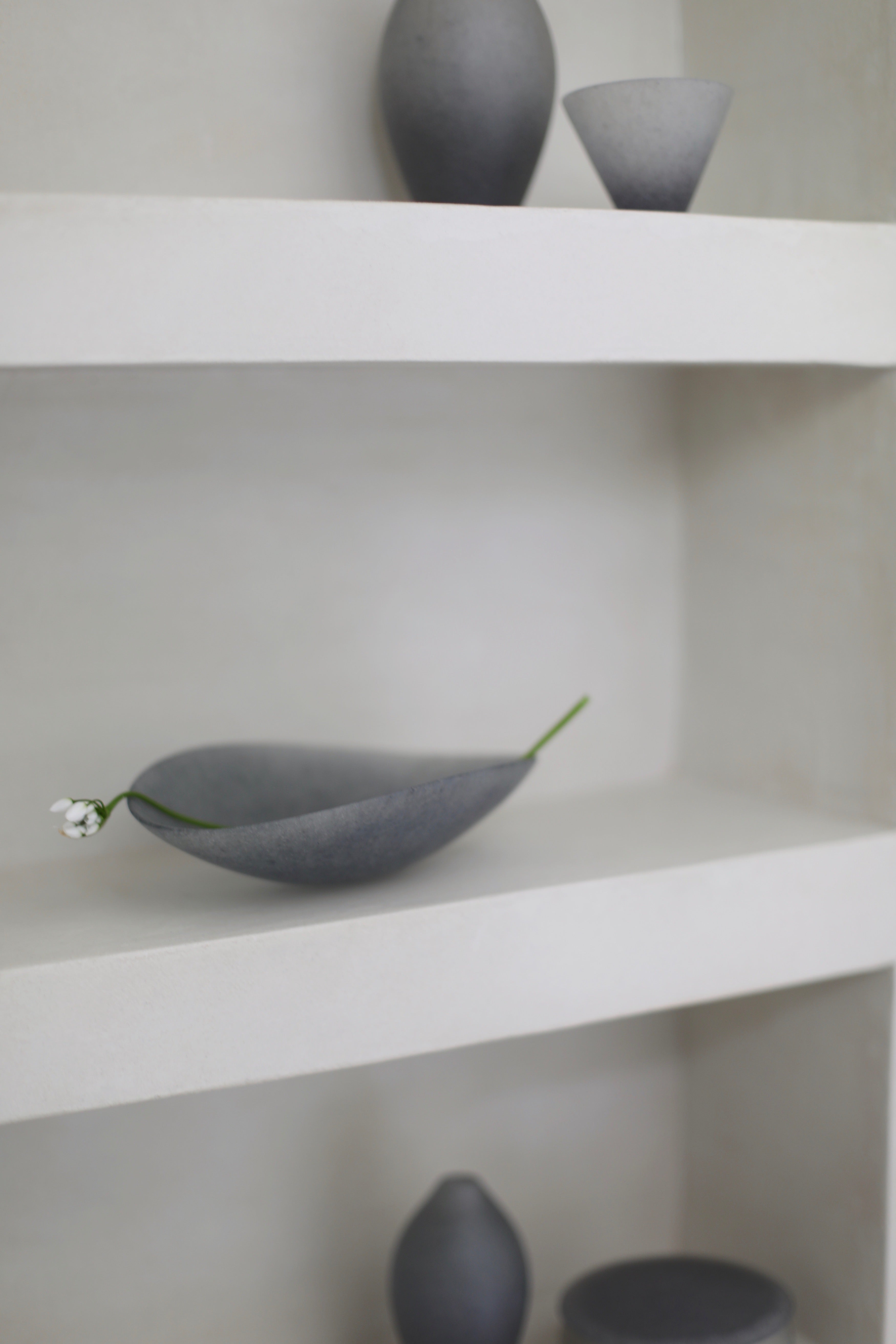17th December 2022
Soda Firing: Marked by Flame
“I became most excited by soda firing when I realised that this was a way of working very directly with fire and it was possible to make pieces which were marked by flame and soda in a truly individual way.”
— Jack Doherty

Potter Jack Doherty at his soda firing kiln (photograph from Doherty Porcelain)
The Ceramic Technique of Soda Firing
Melding the Clay Body and Glaze
— Harrison Levenstein
This atmospheric firing technique leaves dramatic flashings, gradients of colour from the glazing. In a sense, the ceramicist paints the glaze onto the pottery with flames during the process of soda firing, controlling the texture and colour by adjusting the position of ceramics in the kiln and leveraging the chemical reaction between soda and other glazes.
 Soda-fired vessels by Jack Doherty sitting in the kiln (photograph from Doherty Porcelain)
Soda-fired vessels by Jack Doherty sitting in the kiln (photograph from Doherty Porcelain)
Salt Firing
Soda Firing and Environmental Consciousness
Soda firing was introduced as an alternative to salt firing, another firing technique which glazed ceramic pieces in a similar logic. In a salt firing, the sodium chloride vaporises and splits into sodium and chlorine gas. The sodium binds with the alumina and silica in the clay to form a glaze, while the chlorine gas creates a by-product of hydrochloric acid when exposed to moisture. The acid is released from the chimney of the kiln, generating black smoke in the firing process.
As environmental concerns were foregrounded, soda firing gained traction as a more eco-friendly atmospheric firing technique used to glaze pottery. In the process of soda firing, carbon dioxide is produced instead of hydrochloric acid, forming a key difference to the two techniques. Though salt has a lower evaporation point than the sodium ash used in soda firing and creates a more even glaze, soda firing produces brighter and more vivid colours.
The Future of Soda Firing
Open Possibilities and Opportunities
Soda vapours that glaze the ceramic pieces in the soda firing process are not coloured, but react with alumina, silica and iron in the clay body and slips, liquified clay applied to the body of the pottery, to create a wide range of colours and textures. For instance, reaction with copper in the kiln can result in a pink blushing, cobalt can add a blue hue, carbon can form a grey tint. Surfaces on the ceramics more exposed to the sodium vapour can take on a glossy glaze, but the technique can also create an orange peel texture (pebbled surface).

Pottery by Lisa Hammond (left, photograph from Lisa Hammond Pottery) and vessel by Jack Doherty for Maud and Mabel (right)
The language and practice of soda firing is expanding and becoming acknowledged as a ceramic technique with multifarious unexplored possibilities. As a legacy to salt firing, soda firing was used to emulate the effects of the traditional salt-glaze, and many early ceramicists initially working with the technique followed the same firing temperature range, oxidation and cooling cycles as salt firing. Acclaimed artist Jack Doherty rejects this approach, challenging these accepted methods of working with soda firing. Through much experimentation over the years, Doherty’s practice has evolved into a more sustainable approach with lower temperatures reducing the amount of fuel used in the firing process while also allowing for production of a wider range of colours from copper. The respected Lisa Hammond has set up a specified kiln required for soda firing in London and her craft and knowledge is continually perpetuated by her active creation and pedagogy.

Jar by Lisa Hammond (left, photograph from Lisa Hammond Pottery) and cup by Jack Doherty (right, photography from Doherty Porcelain)
Selected Bibliography
Emily Murphy, "What is Soda Firing?", Pottery Blog. https://www.potteryblog.com/blog/what-is-soda-firing.
Jack Doherty interviewed by I-Chi Hsu, "Fuping International Soda-Firing Festival, Xian, China 2019", Doherty Porcelain Blog. https://dohertyporcelain.com/blog/2020/2/4/fuping-international-soda-firing-festival-xian-china-2019.
Harry Levenstein, "What is Soda Firing?". https://www.harrylevensteinpottery.com/whatissodafiring.html.

